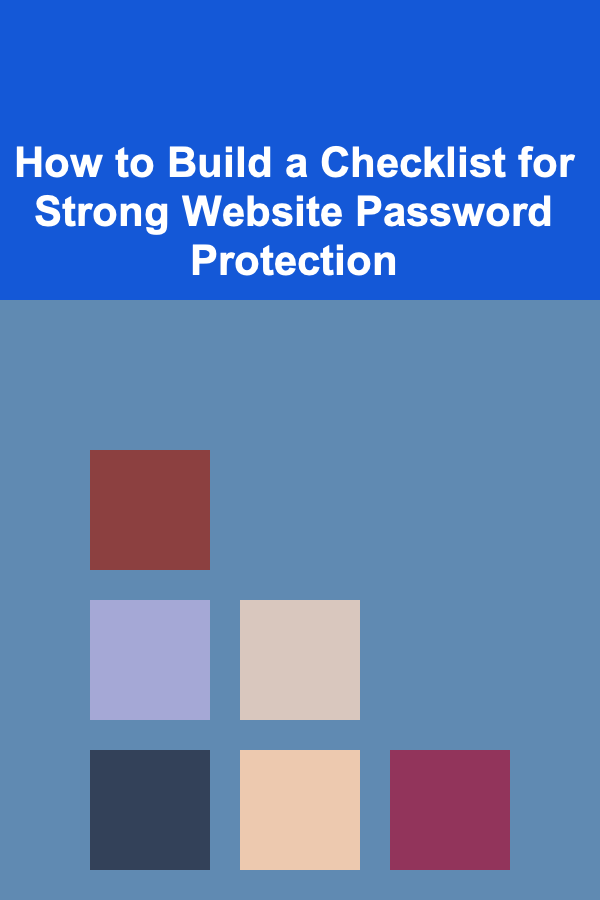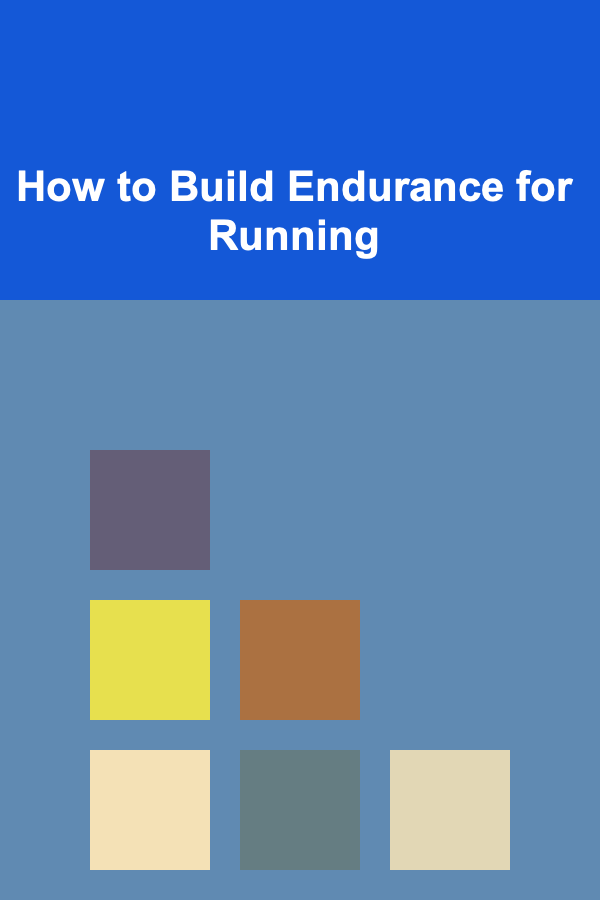
How to Build a Reading To-Do List That Actually Works
ebook include PDF & Audio bundle (Micro Guide)
$12.99$10.99
Limited Time Offer! Order within the next:
Not available at this time

In today's fast-paced world, the pressure of reading endless lists of books, articles, or research papers can quickly become overwhelming. From fiction novels to professional development books, academic research to blogs, the reading list can grow endlessly. However, the key to navigating this vast pool of information is not about reading more, but reading smarter. This article delves into how to build a reading to-do list that is not only achievable but also genuinely effective. It emphasizes the importance of thoughtful planning, prioritization, and discipline.
The Importance of a Reading To-Do List
A reading to-do list can significantly enhance the quality and enjoyment of your reading habit, ensuring that you focus on what truly matters to your personal, professional, or academic growth. Without a to-do list, it's easy to feel overwhelmed and directionless. Here are some of the key benefits of building a reading to-do list:
- Organized Approach: A to-do list provides structure and clarity, helping you focus on what to read and when.
- Prioritization: With a structured list, you can prioritize books that align with your goals, ensuring you spend time on the most impactful material.
- Tracking Progress: It allows you to track your reading progress, fostering a sense of accomplishment and motivation.
- Improved Time Management: A reading to-do list helps you make better use of your free time by enabling you to quickly pick the next item on your list instead of wasting time deciding what to read next.
Step 1: Assess Your Reading Goals
Before creating a reading to-do list, it is essential to reflect on your reading goals. Are you reading for personal development, academic advancement, entertainment, or professional growth? Having a clear purpose behind your reading will guide your choices.
Personal Reading Goals
If you read for personal enjoyment, your list will likely include novels, short stories, poetry, or even light non-fiction. In this case, consider the genres, authors, and themes that you love most, and build your list based on what excites you the most.
Academic or Professional Development
If your goal is to enhance your academic or professional knowledge, your reading list should focus on materials that directly contribute to your expertise or field. This could include textbooks, journal articles, white papers, or research reports.
Broadening Your Knowledge
For general self-improvement or expanding your knowledge on diverse topics, a well-rounded mix of non-fiction books from various genres---such as history, psychology, science, and philosophy---can help you achieve a more expansive worldview.
By identifying your reading objectives, you can tailor your to-do list to meet your specific needs.
Step 2: Curate Your List Thoughtfully
Once you've assessed your reading goals, the next step is curating your reading list. This can be the most challenging part, as it requires balancing your time, interests, and goals. Here are some strategies to create an effective and manageable list:
Prioritize by Relevance
Not all books are equal in terms of value. To build a successful reading to-do list, prioritize materials that will have the most significant impact on your objectives. For instance, if you are a student, your list should prioritize textbooks or scholarly articles relevant to your coursework. Similarly, if you are looking to advance in your career, focus on industry-related books and professional development literature.
Set Realistic Limits
Be mindful of the number of items you add to your list. It can be tempting to include as many books as possible, but overloading your to-do list may lead to burnout. Aim for a reasonable number that you can realistically complete over a set period, whether that's a week, month, or year. For example, start with a goal of reading one book or paper a week, and adjust it based on how much time you have available.
Mix Fiction and Non-Fiction
For many, reading is about escaping reality, while others use it as a tool for learning. A balanced to-do list may include both fiction and non-fiction books. Fiction can provide a much-needed break from the intensity of academic or professional reading, while non-fiction can give you deeper insights into specific topics of interest.
Discover New Authors and Topics
Expanding your horizons is crucial to becoming a well-rounded reader. Regularly include books from authors or subjects that are new to you. This could mean exploring literature from different cultures, genres, or historical periods. Don't be afraid to challenge yourself with complex ideas or unfamiliar genres.
Step 3: Organize the List by Categories
Once you've curated a list of potential reading material, it's essential to organize them for easy access and management. Categorizing your list helps you stay focused and prevents you from feeling overwhelmed by the variety of books available.
Categories Based on Purpose
- Personal Development: Books focused on enhancing emotional intelligence, leadership skills, and personal well-being.
- Professional Development: Books related to career growth, industry-specific knowledge, or skill development.
- Entertainment: Novels, short stories, or light reads meant for relaxation and enjoyment.
- Research and Study: Academic papers, textbooks, and other resources for deep learning and specialized knowledge.
Organize by Priority
Once categorized, rank each category based on priority. For example, if you're preparing for an exam or need to complete work-related reading, prioritize those books over others. Don't hesitate to shift priorities based on changing needs. Your list should be flexible to accommodate urgent tasks or new interests.
Assign Deadlines or Time Frames
While reading is often a leisurely activity, setting deadlines for when to finish a book can help keep you on track. You can break down the reading material into manageable chunks. For instance, instead of aiming to read a 300-page book in a week, aim to read 50 pages a day. Use these smaller, incremental goals to maintain motivation.
Step 4: Establish a Reading Routine
Creating a reading routine is key to ensuring you actually work through your to-do list. Life can get busy, and without a regular routine, reading can easily fall off the priority list. Establishing a specific time each day for reading can ensure you stay on top of your list.
Choose a Dedicated Time
The time of day you read can influence your reading experience. Some prefer reading in the morning when their mind is fresh, while others enjoy reading in the evening as a way to wind down. Choose a time that works best for your lifestyle and stick to it.
Create a Comfortable Reading Environment
A conducive environment makes all the difference in cultivating a reading habit. Whether it's a cozy corner with soft lighting, a quiet coffee shop, or a park bench, find a space that encourages focus and enjoyment. Having a set reading spot can enhance your concentration and make the reading experience more enjoyable.
Set Reading Goals for Each Session
To make your reading sessions more productive, set a goal for each one. This could be as simple as reading a chapter or finishing a set number of pages. Breaking it down into small, achievable targets can make progress feel tangible and rewarding.
Step 5: Track Your Progress
A crucial part of building a functional reading to-do list is tracking your progress. Without monitoring your progress, you may lose sight of how far you've come, which can lead to frustration. Tracking can also motivate you to keep moving forward.
Use a Reading Journal or App
Keeping a journal of your reading progress can provide you with a visual record of what you've completed. Write down the titles, authors, and your thoughts on each book or article you read. Alternatively, use a digital tool or app designed for tracking reading progress. Many apps allow you to set reading goals, mark progress, and even leave reviews.
Reflect on What You've Learned
After finishing a book or article, take some time to reflect on what you've gained. Was there a new concept you learned? Did the book challenge your beliefs or expand your perspectives? Not only does this help cement the knowledge, but it also ensures that you're reading with purpose rather than just crossing items off a list.
Step 6: Revise and Update the List Regularly
A reading to-do list is not static. As you progress, your interests and goals may evolve. Therefore, it's essential to revisit and update your list regularly to reflect changes in your priorities. Remove books that no longer serve your purpose and replace them with new ones that align with your current goals.
Reevaluate Your Goals
Over time, your personal or professional goals may shift. For example, if you've successfully finished a career-focused book, you may decide to shift your focus to a personal development book or leisure reading. Regularly reassessing your goals will keep your list fresh and relevant.
Stay Open to Spontaneous Reading
While it's important to have a structured list, allow yourself to be spontaneous and curious. Occasionally, the best reading material comes from unexpected discoveries. If you come across a book or article that piques your interest, don't hesitate to include it in your list.
Conclusion
Building a reading to-do list that actually works is all about thoughtful curation, realistic planning, and consistent effort. By aligning your reading list with your goals, organizing it thoughtfully, and making it a part of your routine, you can maximize the benefits of your reading habits. Remember that a reading list should be dynamic and adaptable, evolving as your interests and goals change. With the right strategies in place, your reading journey can be both fulfilling and productive.

How to Build a Checklist for Strong Website Password Protection
Read More
How to Make Your Home Feel Bigger with Smart, Budget-Friendly Decor Tips
Read More
How to Set Up a Photo Booth for Your Home Party
Read More
How to Build Endurance for Running
Read More
How to Handle a Lost or Stolen Credit Card
Read More
How to Photograph Real Estate: A Detailed Checklist
Read MoreOther Products

How to Build a Checklist for Strong Website Password Protection
Read More
How to Make Your Home Feel Bigger with Smart, Budget-Friendly Decor Tips
Read More
How to Set Up a Photo Booth for Your Home Party
Read More
How to Build Endurance for Running
Read More
How to Handle a Lost or Stolen Credit Card
Read More